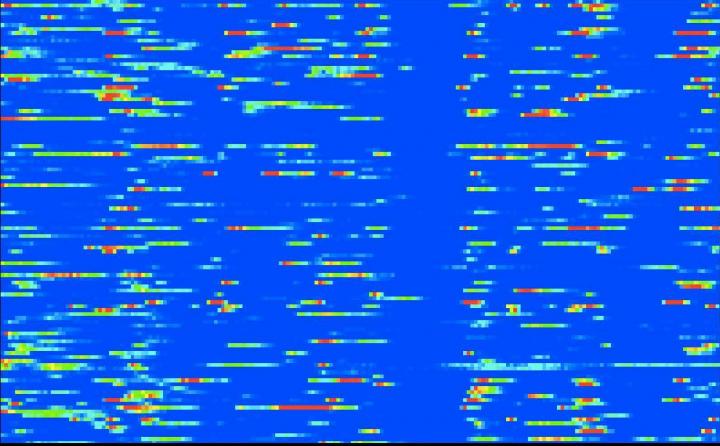
Credit: Prentice et al.
Neurons found in the human eye naturally display a form of error correction in the collective visual signals they send to the brain, according to a new study in PLOS Computational Biology.
Previous studies have shown that groups of neurons throughout the nervous system exhibit collective signaling patterns in response to stimuli. These patterns carry different information than can be relayed by any single neuron on its own. However, the details of this collective signaling are poorly understood.
In the new study, Jason Prentice of Princeton University, New Jersey, and colleagues focused on retinal ganglion cells. These neurons, found in the back of the eye, receive information from light-detecting cells and relay it to the brain. Multiple retinal ganglion cells can monitor the same visual region, and the researchers hypothesized that this redundancy could allow for error correction.
To investigate, the researchers used visual stimuli to activate groups of about 150 retinal ganglion cells with overlapping visual regions and recorded their response. They used the data to build a mathematical model of retinal ganglion activity and analyze its patterns and organization.
The model revealed that a visual stimulus more reliably activates collective retinal ganglion signals than signals from individual cells. This suggests that collective activity allows for error correction and results in the transmission of more precise visual information, meanwhile suppressing background noise introduced by the irregular activity of individual cells.
The new model is more accurate than previous models developed to investigate this collective neuron signaling behavior. It not only reveals new insights about retinal ganglion activity, but could also be applied to explore neural codes in the rest of the human brain, says study co-author Michael Berry.
###
In your coverage please use this URL to provide access to the freely available article in PLOS Computational Biology: http://dx.plos.org/10.1371/journal.pcbi.1005148
Citation: Prentice JS, Marre O, Ioffe ML, Loback AR, Tkačik G, Berry MJ, II (2016) Error-Robust Modes of the Retinal Population Code. PLoS Comput Biol 12(11): e1005148. doi:10.1371/journal.pcbi.1005148
Funding: JSP was supported by a C.V. Starr Fellowship from the Starr Foundation. GT was supported by Austrian Research Foundation grant FWF P25651. MJB received support from National Eye Institute grant EY 14196 and from the National Science Foundation grant 1504977. The funders had no role in study design, data collection and analysis, decision to publish, or preparation of the manuscript.
Competing Interests: The authors have declared that no competing interests exist.
Media Contact
Michael J. Berry II
[email protected]
############
Story Source: Materials provided by Scienmag





